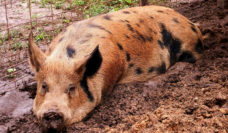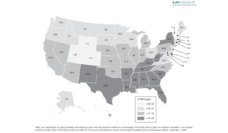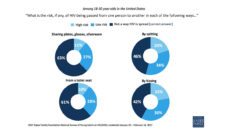Last year, egg prices skyrocketed to over $6 per dozen in some parts of the U.S. This happened because over 50 million chickens died or had to be euthanized due to one of the deadliest outbreaks of avian flu in U.S. history. Although humans cannot contract avian flu from properly prepared poultry products, the death of millions of egg-laying hens caused many Americans to worry about the safety of their eggs and poultry.
Avian flu can be transmitted from birds to humans through close contact with infected live chickens, and the illness can be severe. But avian flu is not a threat to food safety. Not a single person has been infected from proper handling of poultry meat or from eating properly cooked poultry. Despite this, many Americans are still gripped by anxiety and continue to spread misinformation about the safety of poultry products.
Verlin Hinsz examined biases, misperceptions, and inaccuracies about contracting avian flu among 285 home cooks in the Upper Midwest in states (Iowa, Kansas, and Minnesota) where outbreaks occurred in 2006. Hinsz surveyed 285 people about their beliefs related to contracting avian flu when handling, preparing, and consuming poultry products.
Many respondents harbored unfounded fears about avian flu contamination of processed meat. In fact, 57% believed that food safety would be compromised when avian flu got into American poultry. Seventy-eight percent of respondents “at least slightly agreed” that they would avoid eating poultry products if they heard of an avian flu outbreak.
For some, the fear of avian flu looms large during an outbreak, and it is crucial we share accurate information ahead of unfounded fears.
Participants with many false beliefs about avian flu were more likely to feel confident about their ability to produce safe food. That is, while individuals believe in their own cooking, they don’t trust others to make their food during a possible outbreak.
False beliefs—such as that you can be infected with avian flu through cooked chicken—can be costly for meat processors. Misinformation surrounding avian flu has also fueled unnecessary food-related panic, impacting public well-being. Food phobia, referred to as cibophobia, is often rooted in the fear that certain foods will make you sick. While prioritizing food safety has its benefits, the constant worry about food safety can restrict dietary choices and erode the pleasure and social aspects of eating.
Food avoidance is particularly concerning given that chicken tends to be the cheapest meat available in grocery stores. And the financial burden of seeking out alternative or perceived “safer” food options can strain budgets. Low-income Americans who rely on chicken and eggs as a major source of protein might find it difficult to find budget-friendly replacements.
For some, the fear of avian flu looms large during an outbreak, and it is crucial we share accurate information ahead of unfounded fears. This means creating a broader understanding of how avian flu spreads and recognizing the strict safety measures already in place for poultry production. At home, cooking chicken to over 165 degrees kills viruses, such as avian flu, and other bacteria, as well. Education about what is safe and about safe food preparation allows each of us to feel like we can protect ourselves and our families.
Photo via Getty Images














